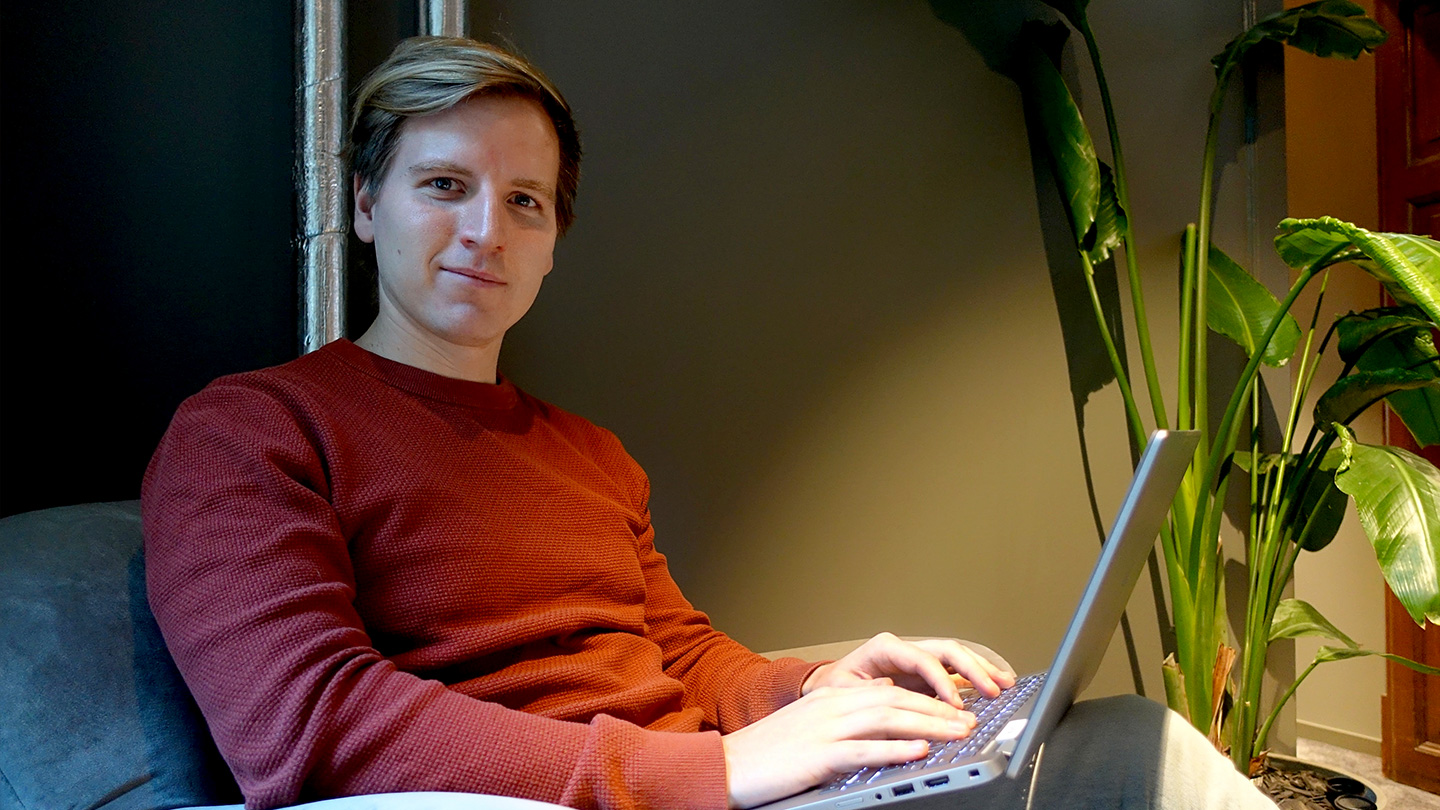We use cookies to improve how you experience our website. Read more about our GDPR-policy here.

Maciej Kaplan grew up in the picturesque Sollentuna, just north of Stockholm. Among the Kaplan family’s favourite activities were skiing experiences in the Swedish and Norwegian mountains during the winters and sailing holidays in the Stockholm archipelago during the summers. Otherwise, Maciej’s childhood was very much about sailing dinghies and playing table tennis, computer games, as well as trying out various musical instruments.
Maciej describes himself as a consistent B-/C-student during his school years. At high school, he followed the Natural Sciences programme with a focus on mathematics and computer science. He had no plan to start working immediately after high school and applied to various university programmes. Maciej was admitted to Information Technology at Uppsala University.
He gave the programme a chance for a year, but realised that IT studies were not meant for him. Having fallen in love with the city of Uppsala and longing for physics, he switched to the engineering programme in Engineering Physics with Materials Science and instantly felt at home at, as the education was a mixture of chemistry, physics, and mathematics. After finishing his master’s degree, he did not feel ready to leave Uppsala and stayed for a PhD in materials physics, focusing on metals, alloys, and hydrogen. In the spring of 2022 after finishing his PhD, Maciej decided to look for opportunities in the business world after twelve years in academia.
“During my upbringing, I had no clear career dreams,” says Maciej. “I still don’t know what I want to be when I grow up. My approach has been that things work out as long as I grow as a person and enjoy what I do. What do I want to do here and now? Or sometimes, what do I not want to do? I believe that an overly structured life becomes too eventless for me, it is a way for me to satisfy my curiosity and leave room for spontaneity. My driving force has always been to collect as many new experiences and pieces of knowledge as possible.”
As summer times is a rather cold job-searching period, Maciej had the breathing space to consider possible career paths. He concluded that his first career choice should focus on a combination of hydrogen, materials, and energy. Shortly after that, he came across GreenIron on LinkedIn. Maciej felt that the company’s unique process of producing carbon-free metals using hydrogen met his expectations. “I was hooked after the first interview with Tanja, our CCO,“ says Maciej, and after some contacts, he met the CEO, Edward Murray.
“I felt a connection right away. Edward enthusiastically described GreenIron’s green technology and its contribution to a sustainable and circular future through energy and resource efficiency,” Maciej remembers. “We spoke about GreenIron’s challenging journey from start-up to becoming an international company within the mining and metal industry, and our shared interest in lifelong learning. Some months later, I moved back to Stockholm and had a permanent employment at GreenIron as a process engineer.”
Compared to his colleagues, who all have long and impressive careers, Maciej’s CV now starts to build his at GreenIron from a business perspective after his academic path. “I jokingly say that I work with a bunch of CEOs,” says Maciej. “A workday includes navigation through diverse tasks: customer meetings, technology discussions, environmental permitting, patents, and more. I’ve experienced shareholders’ meetings from the front row and sit in daily discussions with the CEO and management. All of this gives me a unique opportunity to scrutinise different positions and see various aspects of the business world.”
For Maciej, it’s crystal clear that GreenIron’s technology will meet the high expectations. In 2024, the main priority is to establish the production facility in Sandviken and pave the way for the future generations of furnaces, considering the company’s aggressive expansion plans. Although it’s vital to drive green, innovative solutions within the industry to curb climate change, Maciej’s motivation is to be part of creating a future society for the better of many. Sustainability work is often associated with climate change, but it is broader than that: Ecological and social aspects are also of great importance.
“The companies within the green transformation of our industry are mainly focused on primary raw materials,” says Maciej. “Currently, there are only a handful of players in the world that focus on secondary raw materials, by-products, including us at GreenIron. If I were to generalise broadly, GreenIron has no direct competitors. For example, I do not know of another technology which has a similar flexibility in the context of input materials: ores, mill scales, slags, filter dusts, etc., as well as different metals like copper, nickel, manganese, and molybdenum. We are flexible since our process is suitable regardless of which input material we put into the furnace, as long as it’s an oxide.”
By 2030, Maciej hopes that GreenIron will have hundreds of furnaces in operation worldwide. Hopefully, the technology has also advanced further, so that GreenIron can reduce additional metals. “Where GreenIron will be on its journey in twenty years is dependent on for example how well EU countries manage to fulfil their promise to become climate-neutral by 2050,” says Maciej. “If we are to target the waste heaps and landfill deposits around the world and produce various metals from waste streams, then we can truly live up to our motto: More Circularity. Less Mining.“